There is very little time left now. Just a few more miles and the 11 boats involved in the Ocean Race, of which Ulysse Nardin is timekeeper, will arrive in Genoa, the final leg of the round-the-world sailing race. (Here all our posts about Ulysse Nardin)

A regatta full of meaning
A regatta that, regardless of how it will end, represents the ideal starting point for a whole series of considerations. The first, of course, concerns Italy which, for the first time in the history of this competition, will play an important role by becoming the final stage of the regatta itself. An important goal as well as that represented by the time factor. And here the perimeter of reflections widens further. Starting with a special anniversary, namely the celebrations for the 50th anniversary of the start of the first edition held in 1973 when it was then called Whitbread Round the Wolrd Race.
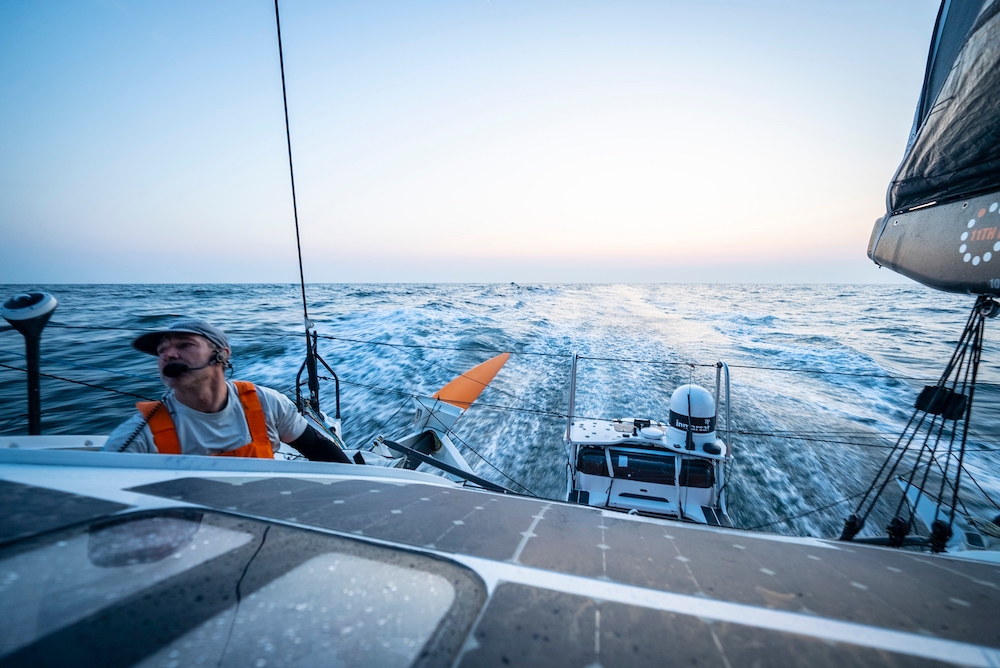
Ulysse Nardin, the Ocean Race in the service of the Oceans
Then there is the environmental issue. A chapter that is extremely topical and where the hands of the clock are running even faster than before. Hence the need to transform The Ocean Race, not only into an extraordinary showcase to raise awareness of this issue among the public and the sailing community, but also to turn it into a measuring instrument to learn about the state of health of the oceans. During the six months of regattas, the six Imoca and five VO65 turned into a sort of floating laboratory to take water samples and check their condition once ashore. The first data that emerged left no room for doubt.

The spread of microplastics
Preliminary results from the first legs of the current edition of The Ocean Race show the presence of microplastics in each of the 40 samples analysed so far, with as many as 1,884 microplastics per cubic metre (pm3)* of water in some locations.

The samples analysed in the second leg of the round-the-world sailing trip, from Mindelo, Cape Verde, to Cape Town, South Africa, found concentrations of microplastics ranging from 92 to 1,884 pm3 particles. The microplastic samples were of a similar level to those collected during the third leg, the longest in the 50-year history of the race, a 12,750-mile sail across the Southern Ocean. Despite being one of the most remote areas on the planet, 160 to 1,492 pm3 particles were found in the samples collected during this leg, between Cape Town and Itajaí, Brazil.

Ulysse Nardin, microplastics also collected on board
Microplastics are collected during the 60,000-kilometre race using a sampling unit installed on board: a special filtering system designed to collect plastic particles (between 0.03 mm and 5 mm), which is carried on board by two crews: GUYOT environnement – Team Europe and Team Holcim – PRB. The device works by sucking in water and passing it through a filter for a period of two hours to capture microplastics. The sailors take new samples every day, which, after each leg, are supplied to the National Oceanography Centre (NOC) in the UK for analysis, with support from the University of Rhode Island in the US.
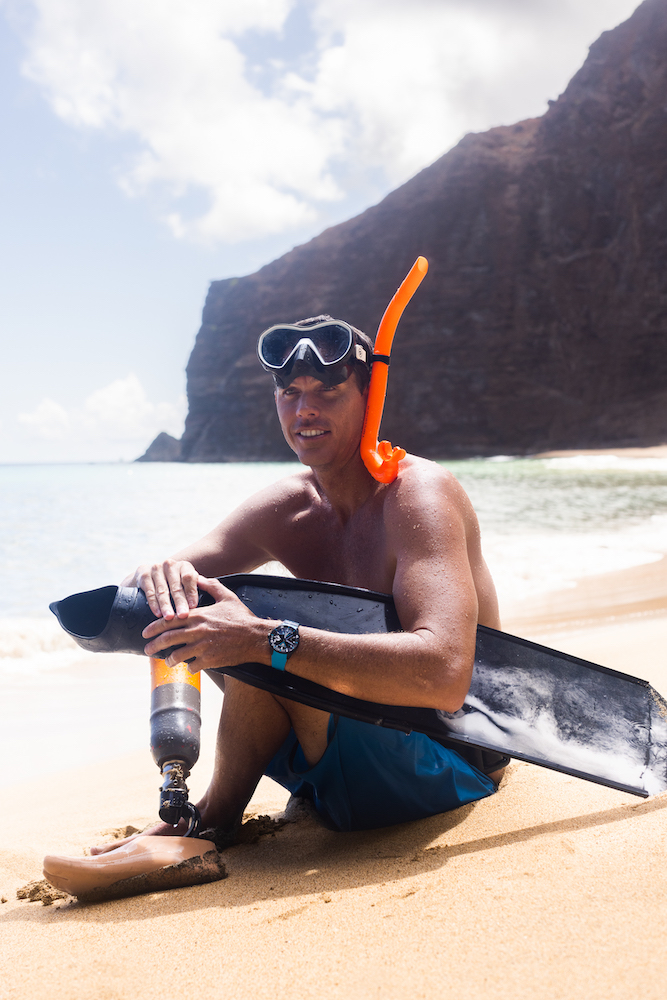
The NOC has recently become a scientific collaborator with The Ocean Race, reflecting the two organisations’ commitment to using the race platform to accelerate ocean science. Stefan Raimund, chief scientist of The Ocean Race, said: “We are discovering more and more every day how pervasive microplastics are in the oceans. They are found in all species in the marine environment, from plankton to whales, and we ourselves consume them in seafood and even in our drinking water. Science is the most powerful weapon we have to combat this problem. The data we collect can help raise awareness and influence companies and governments to make the necessary decisions to better protect our planet’.

Ulysse Nardin timekeeper of The Ocean Race
Time, the marine universe and sustainability are also the coordinates of the route traced by Ulysse Nardin, who in his role as official timekeeper of the round-the-world race strengthens his bond with the sailing world. An association marked by several moments, the first of which took place last year when the Le Locle-based company unveiled the Diver The Ocean Race in Alicante, a limited edition made from recycled or regenerated materials. More in detail The sides of the case and back of the 44mm Diver The Ocean Race are the result of an interesting combination of materials: 40% Carbonium® (Lavoisier Composites) and 60% polyamide recycled from fishing nets, Nylo® (FIL&FAB).
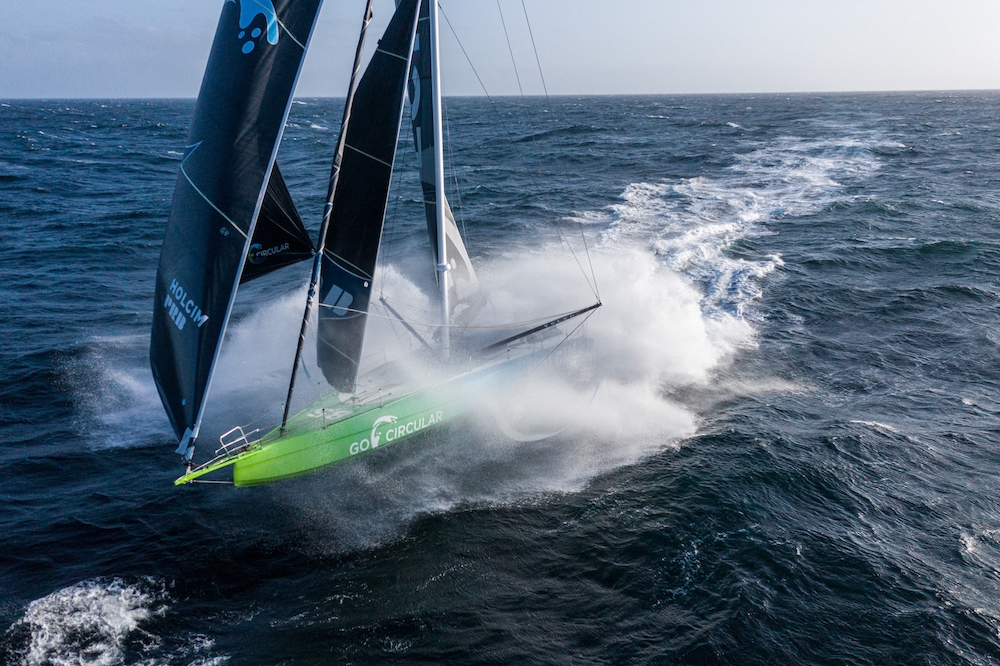
An environmentally friendly watch
Ulysse Nardin put its trust in the young Breton designers who founded the first fishing net recycling business in France. FIL&FAB, the start-up operating in the industrial design and transition sector, recovers nets discarded in French fishing ports and recycles them in the form of polyamide granules called Nylo®. At the time, Patrick Pruniaux, CEO of Ulysse Nardin said: How can we turn some of this plastic into a luxury item? With the help of start-ups like FIL&FAB, we have managed, with great success, to make and market watches derived from recycled fishing nets’.

Ulysse Nardin, the Ocean Race Diver Chronograph
The second stop on this journey that began in 2022 is The Ocean Race Diver Chronograph. Officially presented at the Newport stop in Rhode Island, this limited edition pays tribute to the round-the-world regatta now in its 50th year. Water-resistant to 300 metres, the 44 mm-diameter sandblasted black DLC titanium case houses the Ulysse Nardin Manufacture UN-150 chronograph calibre and its 318 components. The movement is visible through the sapphire crystal caseback and bears the number ’50’ in tribute to the anniversary.
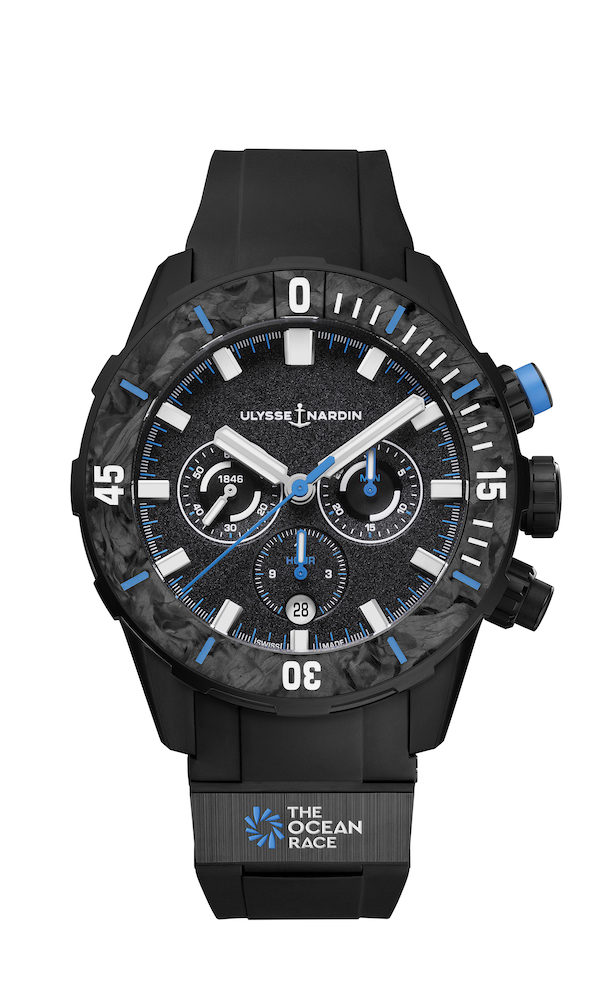
The Ocean Race logo is applied to the ceramic part that decorates the rubber strap with pin buckle. The unidirectional bezel has a Carbonium® finish, which contains recycled fibres from aircraft fuselage waste, and has a 40% lower environmental impact than other carbon composites. “The new Diver celebrates this legendary race, its commitment to protecting the oceans and the marine research and conservation projects that Ulysse Nardin is proud to support,” said Pruniaux. A launch born under a lucky star since a few days after the presentation, skipper Kevin Escoffier and his Team Holcim-PRB broke the 24-hour record for monohulls. In detail, the first to fall was The Ocean Race 24-hour Speed Record Challenge sponsored by Ulysse Nardin of 602 miles, set in the last race by skipper Simeon Tienpont’s Team AkzoNobel.
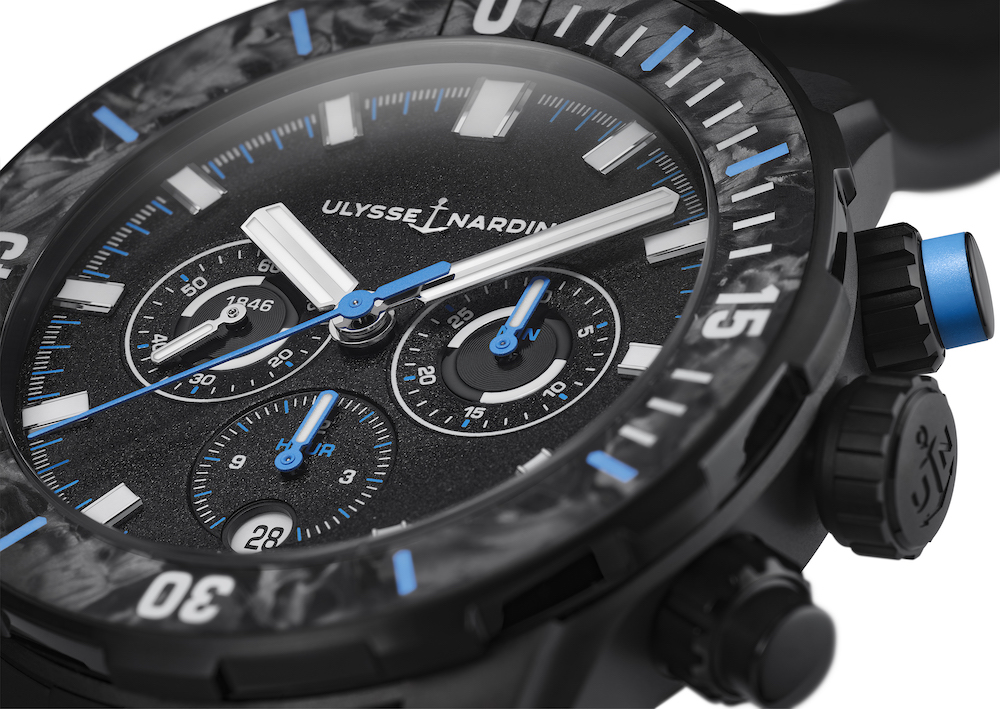
A handful of hours later, the overall record for a monohull, of 618 miles, set by the 100-footer Comanche in 2015, was also pulverised, which Team Holcim-PRB tweaked to 640.9 miles. “Congratulations to the Holcim-PRB crew,” he said. “For me it’s fantastic to see these boats break the race record but also the 24-hour record by overtaking a 100-foot maxi yacht,” said Simeon Tienpont, the previous record holder of the race. “It’s just crazy! I think it’s really good for the sport; it shows what we are capable of nowadays, with all the techniques and innovations in foiling. It must be really exciting for them: I think this record will be hard to beat,” Tienpont concludes.

Ulysse Nardin and World Oceans Day
There is one last, perhaps the most important, stage to seal the bond between Ulysse Nardin and the sea. On 8 June, World Oceans Day, the Le Locle-based company launched two new timepieces, the Diver X Skeleton and the Diver Net, designed to support a noble cause. That carried out by the NGO OCEARCH and to support shark conservation activist Mike Coots. The first stems from the experience gained with the Diver Net. This segantempo is the result of a collaboration between the Manufacture and several start-ups. The case is made of Carbonium® (with 40% less environmental impact than other carbon composites), Nylo® (polyamide recycled from fishing nets) and 95% recycled steel. This particularly high percentage represents a further development compared to the first Diver Net, which contained 80% recycled steel.

The new Diver Net Azure is powered by the UN-118 movement, equipped with a silicon balance spring, escapement wheel and DiamonSil anchor. This haute horlogerie timepiece, water-resistant to 300 metres, is characterised by the blue colour that highlights the X and some of the details on the dial, and the hour markers on the bezel. The rubber strap also echoes the colours of the ocean.
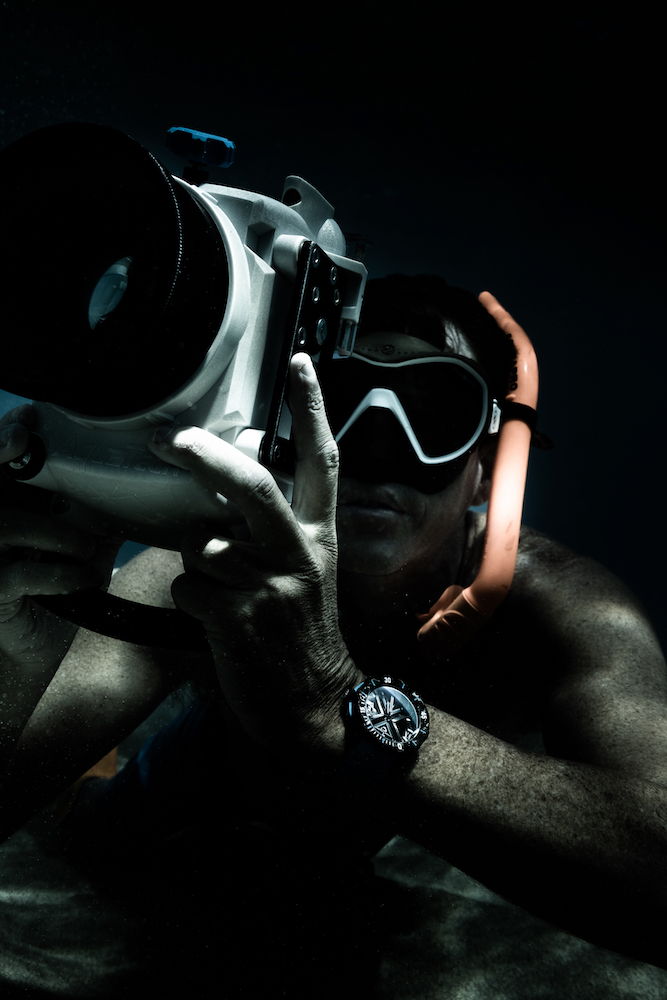
The Diver X Skeleton Azure does not go unnoticed and revolutionises the aesthetics of diver’s watches. With its DLC titanium case water-resistant to 200 metres, this extraordinary timepiece features a dynamic skeleton dial distinguished by an X with a black and a blue-blue hue that are both particularly intense. The transparency of the dial and movement draws the eye into the heart of the mechanism. Carbonium®, a light and resistant technical composite, covers the barrel cover and the unidirectional rotating bezel for measuring diving times. There is very little time left, however, so as not to permanently compromise the health of our sea.
Matteo Zaccagnino




